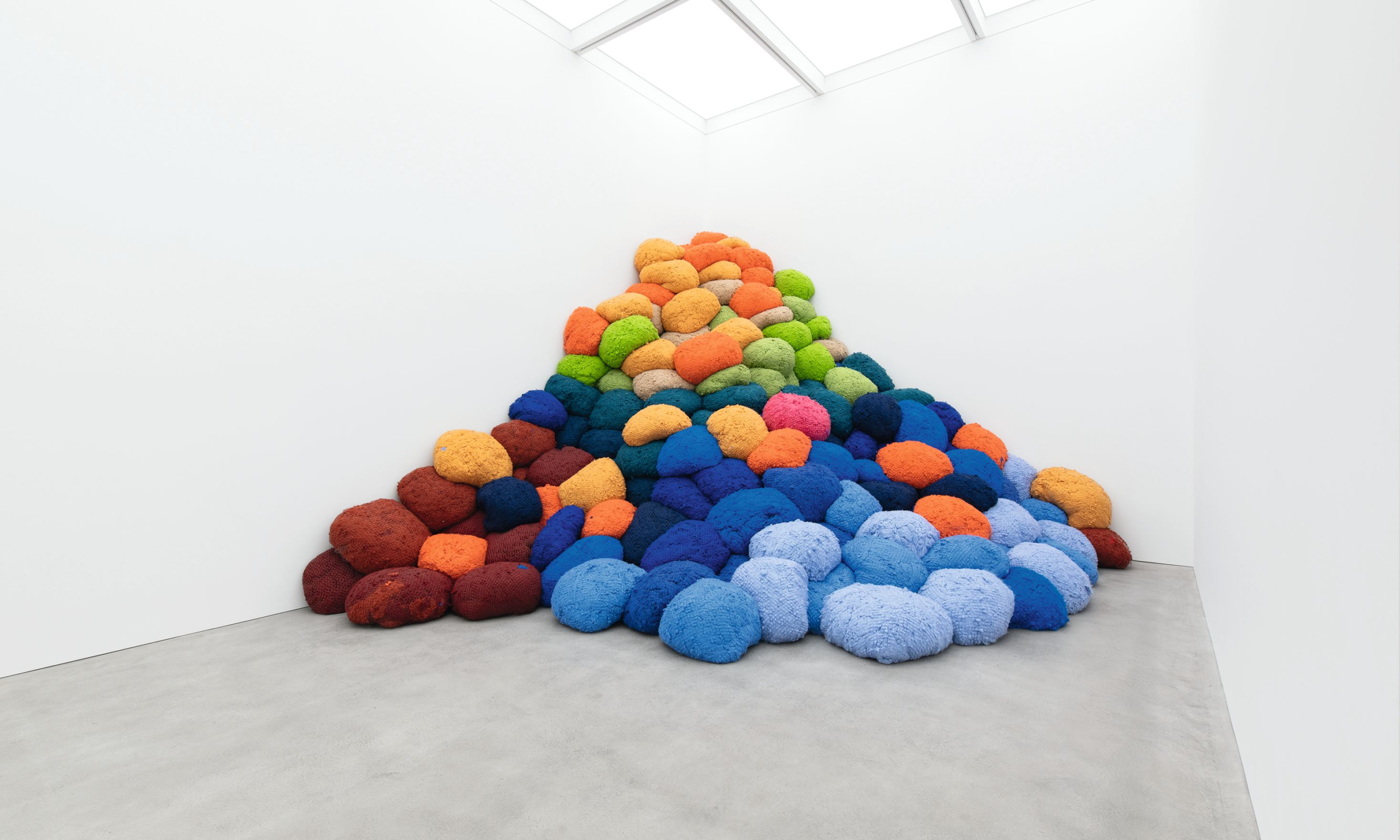Alison Jacques' new 6,000 sq. ft Mayfair gallery has a double-height space allows that allows her to show large-scale works, such as Sheila Hicks’s Infinite Potential (2023)
Photo: Michal Brzezinski
Seemingly defying the enduring pains of Brexit and rising inflation, several galleries have opened or expanded their footprints in London during the run-up to Frieze.
Last week crowds spilled onto the historic gallery hub of Cork Street, in upmarket Mayfair, where two established London dealers, Alison Jacques and Stephen Friedman, have each opened new, amply sized flagship locations. Stephen Friedman’s two-storey gallery features a sculpture garden, complete with an imposing work by Yinka Shonibare, while Alison Jacques is showing off her double-height ceilings with a towering fibre installation by Sheila Hicks.
Also in Mayfair, Pilar Corrias marks 15 years of business by opening its own “large, museum-quality space” says its eponymous founder. The new gallery, on Conduit Street, replaces Corrias’s first space, which she opened in 2008 in Fitzrovia. “That location made sense as a younger gallery,” she says, “but I’ve grown, and the artists I represent have too—we needed to evolve”.
Pop-ups and flagships
Further spaces to open nearby include the new gallery Albion Jeune, in Fitzrovia, and The Artist Room, founded in 2021 by Milo Astaire, which opened a three-storey gallery in Soho this week. Meanwhile, the global gallery brand Lehmann Maupin intends to “double its footprint” in the city, according to a spokesperson, with a “pop-up space on Cork Street”. And just this week, the Zurich gallerist Maria Bernheim announced that she will open a five-storey flagship in Mayfair on 30 November.
Some of the city’s mid-tier galleries are expanding too. The London-based gallery Union Pacific, which this year takes part in the main section of Frieze London after showing in Focus for several years, last week opened a second space in Bloomsbury. This neighbourhood, famed for its literary pedigree, is now home to a growing gallery cluster, including the newly established Brunette Coleman and Phillida Reid, which first opened in Soho in 2010, both of which set up new spaces there in the last year. Meanwhile, the Athens gallery Hot Wheels will open its first overseas space in Bloomsbury next month.
Meanwhile younger galleries are also thriving, especially in the city’s east. Ginny on Frederick, which is taking part in Frieze’s Focus section for the first time this year, has moved from a tiny former sandwich shop to a slightly larger former garage in Farringdon. It joins other recently established galleries, such as Neven and Sherbet Green, both of which opened pint-sized spaces in Bethnal Green in the last six months.
This flurry of activity is set against a foreboding backdrop. In the past four months, two well-known London galleries, Fold and Simon Lee, ceased operations (the latter is financially insolvent, but has not officially shut down).
This is not to mention a recent spate of New York galleries announcing their closures, and Paris continuing to gain ground as an art market hub, with three international galleries opening outposts in the French capital over this coming weekend (14-16 October): Hauser & Wirth, Mendes Wood DM, and the London dealer Stuart Shave’s Modern Art.
However, the UK capital still has unique attractions that make it good for business. “London is still the second-largest art market, and I am a commercial gallery, so it still makes sense for me to be here,” Corrias says. “Sure, Brexit happened, but the city’s strategic location between North America, the Middle East and China, not to mention its ethnic diversity and lack of a language barrier with the US, keeps it very attractive.”

